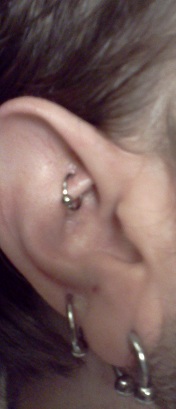
Photo from wikipedia
STUDY DESIGN Non-randomized prospective controlled study. OBJECTIVES To compare the safety and perioperative outcomes between patient-specific template-guided and fluoroscopic-assisted freehand techniques in transforaminal lumbar interbody fusion (TLIF) using cortical bone… Click to show full abstract
STUDY DESIGN Non-randomized prospective controlled study. OBJECTIVES To compare the safety and perioperative outcomes between patient-specific template-guided and fluoroscopic-assisted freehand techniques in transforaminal lumbar interbody fusion (TLIF) using cortical bone trajectory (CBT). METHODS The subjects consisted of 94 consecutive patients who underwent single-level TLIF using CBT. The standard trajectory was set so as to start from the pars interarticularis, pass the inferior border of the pedicle, and end around the middle of the vertebral endplate. Template guide technique was performed in 66 patients (Guide group), and fluoroscopic-assisted freehand technique was performed in 28 patients (Freehand group). Intraoperative parameters, screw placement accuracy, and complications were compared between the two techniques. RESULTS The Guide group had significantly shorter operative and radiation exposure times than the Freehand group (operative time 84.6 ± 16.7 vs 93.0 ± 15.0 minutes; P = .023, radiation exposure time 7.0 ± 6.0 vs 20.4 ± 11.8 seconds; P < .001, respectively). The screw diameter and the screw insertion depth in the vertebra in the Guide group were significantly greater than those in the Freehand group. The degree and incidence of facet joint violation were comparable between the two groups, while the accuracy of screw placement was significantly different, with no perforation rate of 97.7% in the Guide group vs 82.1% in the Freehand group (P < .001). No significant difference was found in the rate of clinically relevant complications between the two groups. CONCLUSIONS The template-guided technique provided a safe and highly accurate option for CBT screw placement.
Journal Title: Global spine journal
Year Published: 2022
Link to full text (if available)
Share on Social Media: Sign Up to like & get
recommendations!